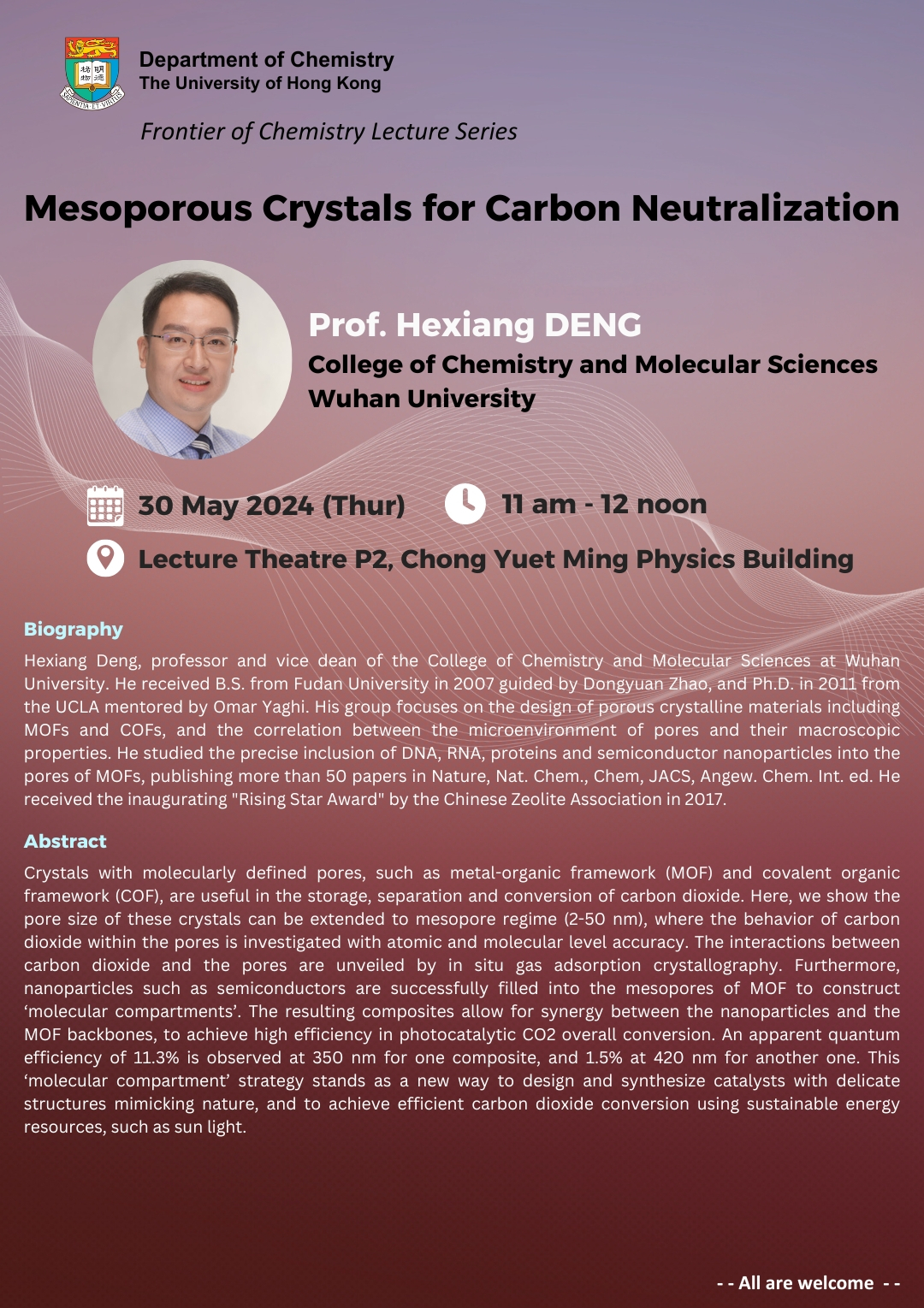| Date | 30 May 2024 |
| Time | 11:30 am - 12 noon (HKT) |
| Venue | Lecture Theatre P2, Chong Yuet Ming Physics Building |
| Speaker | Prof. Hexiang Deng |
| Institution | College of Chemistry and Molecular Sciences, Wuhan University |
 Title:
Title:
Mesoporous Crystals for Carbon Neutralization
Schedule:
Date: 30th May, 2024 (Thurday)
Time: 11 am - 12 noon (HKT)
Venue: Lecture Theatre P2, Chong Yuet Ming Physics Building
Speaker:
Biography:
Hexiang Deng, professor and vice dean of the College of Chemistry and Molecular Sciences at Wuhan University. He received B.S. from Fudan University in 2007 guided by Dongyuan Zhao, and Ph.D. in 2011 from the UCLA mentored by Omar Yaghi. His group focuses on the design of porous crystalline materials including MOFs and COFs, and the correlation between the microenvironment of pores and their macroscopic properties. He studied the precise inclusion of DNA, RNA, proteins and semiconductor nanoparticles into the pores of MOFs, publishing more than 50 papers in Nature, Nat. Chem., Chem, JACS, Angew. Chem. Int. ed. He received the inaugurating "Rising Star Award" by the Chinese Zeolite Association in 2017.
Abstract:
Crystals with molecularly defined pores, such as metal-organic framework (MOF) and covalent organic framework (COF), are useful in the storage, separation and conversion of carbon dioxide. Here, we show the pore size of these crystals can be extend to mesopore regime (2-50 nm), where the behavior of carbon dioxide within the pores is investigated with atomic and molecular level accuracy. The interactions between carbon dioxide and the pores are unveiled by in situ gas adsorption crystallography. Furthermore, nanoparticles such as semiconductors are successfully filled into the mesopores of MOF to construct ‘molecular compartments’. The resulting composites allow for synergy between the nanoparticles and the MOF backbones, to achieve high efficiency in photocatalytic CO2 overall conversion. An apparent quantum efficiency of 11.3% is observed at 350 nm for one composite, and 1.5% at 420 nm for another one. This ‘molecular compartment’ strategy stands as a new way to design and synthesize catalysts with delicate structures mimicking nature, and to achieve efficient carbon dioxide conversion using sustainable energy resources, such as sun light.
- ALL ARE WELCOME -
